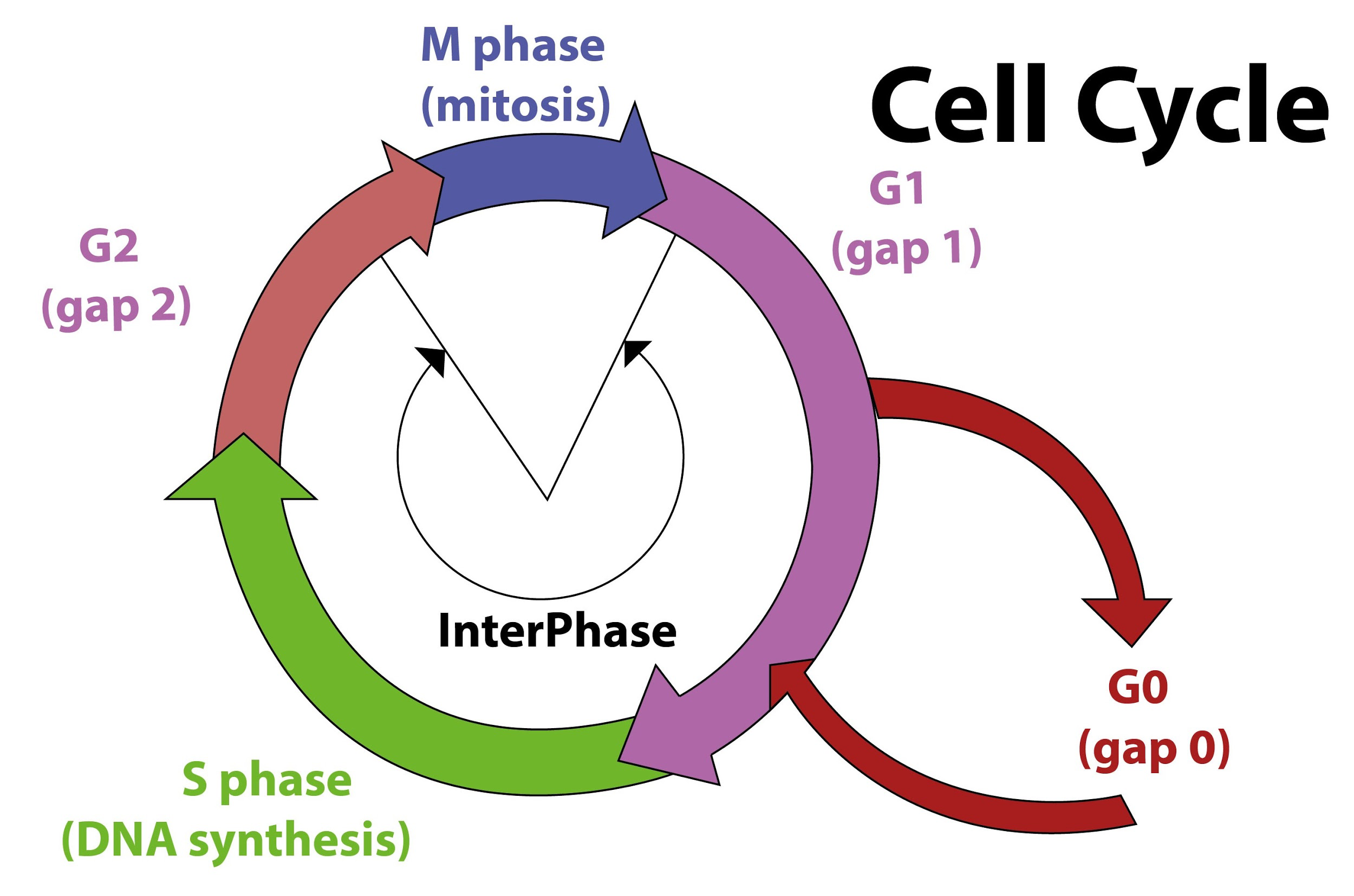
Name the stage of the cell cycle at which one of the following events occurs.
(i) Chromosomes are moved to the spindle equator
(ii) Centromere splits and chromatids separate
(iii) Pairing between homologous chromosomes takes place
(iv) Crossing over between homologous chromosomes takes place
Answer
492.9k+ views
Hint: The cell cycle is divided into two parts - interphase and the mitotic phase. The mitotic phase is the event of the nuclear division and is represented by mitosis and meiosis. The daughter cells have the same chromosome number as the parent cell in mitosis and half the chromosome number in meiosis.
Complete step by step answer:
M-phase in the cell cycle represents the phase of nuclear division in the cell. The nucleus may divide by mitosis or meiosis. Mitosis is divided into 4 phases namely Prophase, metaphase, anaphase, and telophase. Among them, metaphase is the stage where chromosomes move to the spindle equator. While in anaphase, the daughter chromosome separates into individual chromatids along with the splitting of the centromere.

Meiosis is a two-stage process with meiosis-i and meiosis-iI. In meiosis-i, the pairing between homologous chromosomes occurs in the zygotene stage of prophase-i. The zygotene is followed by the pachytene stage, where crossing over between homologous chromosomes takes place.
- All three phases
-
- S Phase: In the synthesis phase, the cell spends all its energy on doubling the DNA. Though the DNA is doubled, the number of chromosomes remains the same.
-
Note::
- A cell may temporarily or permanently exit the cell cycle and enters a stage designated as
- They are not dormant as they are busy carrying out their functions like excretion, secretion, synthesis, etc in the organisms.
Complete step by step answer:
M-phase in the cell cycle represents the phase of nuclear division in the cell. The nucleus may divide by mitosis or meiosis. Mitosis is divided into 4 phases namely Prophase, metaphase, anaphase, and telophase. Among them, metaphase is the stage where chromosomes move to the spindle equator. While in anaphase, the daughter chromosome separates into individual chromatids along with the splitting of the centromere.

Meiosis is a two-stage process with meiosis-i and meiosis-iI. In meiosis-i, the pairing between homologous chromosomes occurs in the zygotene stage of prophase-i. The zygotene is followed by the pachytene stage, where crossing over between homologous chromosomes takes place.
- All three phases
-
- S Phase: In the synthesis phase, the cell spends all its energy on doubling the DNA. Though the DNA is doubled, the number of chromosomes remains the same.
-
Note::
- A cell may temporarily or permanently exit the cell cycle and enters a stage designated as
- They are not dormant as they are busy carrying out their functions like excretion, secretion, synthesis, etc in the organisms.
Latest Vedantu courses for you
Grade 10 | MAHARASHTRABOARD | SCHOOL | English
Vedantu 10 Maharashtra Pro Lite (2025-26)
School Full course for MAHARASHTRABOARD students
₹31,500 per year
Recently Updated Pages
Express the following as a fraction and simplify a class 7 maths CBSE

The length and width of a rectangle are in ratio of class 7 maths CBSE

The ratio of the income to the expenditure of a family class 7 maths CBSE

How do you write 025 million in scientific notatio class 7 maths CBSE

How do you convert 295 meters per second to kilometers class 7 maths CBSE

Write the following in Roman numerals 25819 class 7 maths CBSE

Trending doubts
State and prove Bernoullis theorem class 11 physics CBSE

What are Quantum numbers Explain the quantum number class 11 chemistry CBSE

Write the differences between monocot plants and dicot class 11 biology CBSE

1 ton equals to A 100 kg B 1000 kg C 10 kg D 10000 class 11 physics CBSE

State the laws of reflection of light

In northern hemisphere 21st March is called as A Vernal class 11 social science CBSE




